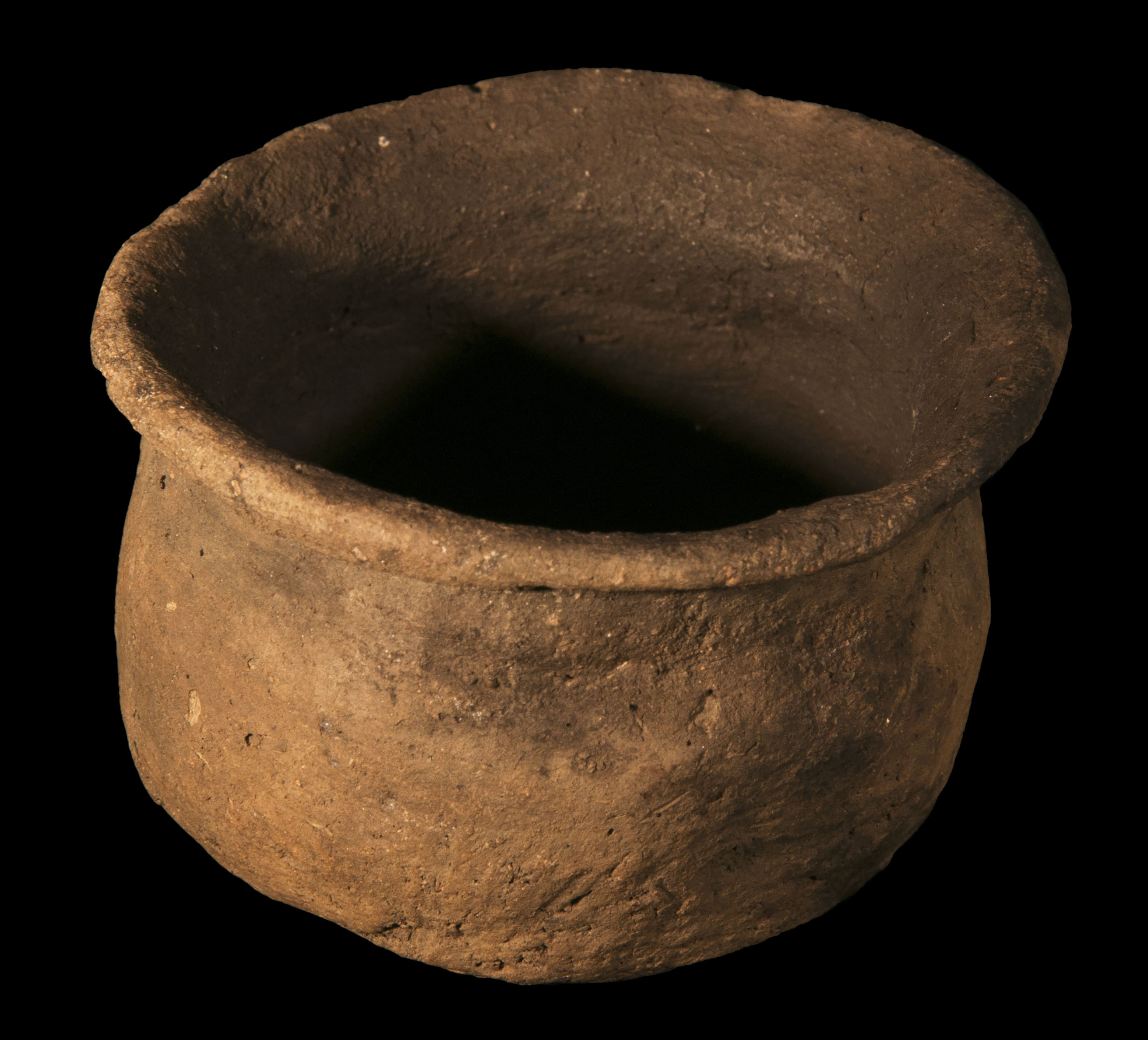Rio de Flag Brown is a type of Alameda Brown Ware found around the San Francisco Mountains in northern Arizona.
Archaeological Culture: Sinagua
Date Range: A.D. 700-1090 (per Christian Downum, Northern Arizona University).
Construction: By paddle and anvil.
Firing: In an oxidizing atmosphere.
Core Color: Gray to black; brick-red to brown or buff.
Carbon Streak: Common.
Temper: Predominantly opaque angular fragments (gray, tan, or black); occasional grain of quartz or feldspar.
Surface Finish: Usually bumpy, compacted; sometimes polished; anvil marks often conspicuous.
Surface Color: Jar exteriors brown to brownish-gray.
Forms: Bowls (sometimes smudged), jars predominate, pitchers rare (handle is not attached to rim), conical pipes.
Vessel Thickness: 4.7 to 8.5 mm, average 6 mm (jars); 3.5 to 6 mm, average 4.7 mm (bowls).
Decoration
None, except on Rio de Flag Tooled (see below).
Variants
- Rio de Flag Smudged – Same as Rio de Flag Brown, but smudged on the interiors (bowls only).
- Rio de Flag Tooled – Same as Rio de Flag Brown, except that the surface is fingernail- or tool-indented.
Comparisons: The temper in Woodruff Brown has abundant fine grains of quartz sand; Woodruff Brown vessels also have dull red to light brown surface colors (frequently slate gray on the interior); gritty, but fairly uniform surface finishes; and construction by coiling . The temper in Adamana Brown is mostly quartz sand, with mica-like particles conspicuous on the surface. Verde Brown has medium angular quartz temper.
Compiled from the following sources:
Colton, Harold. (1958) Pottery Types of the Southwest. Museum of Northern Arizona Ceramic Series No. 3D. Flagstaff, Arizona.
Compiled by:
April Peters, Northern Arizona University Anthropology Laboratories.

